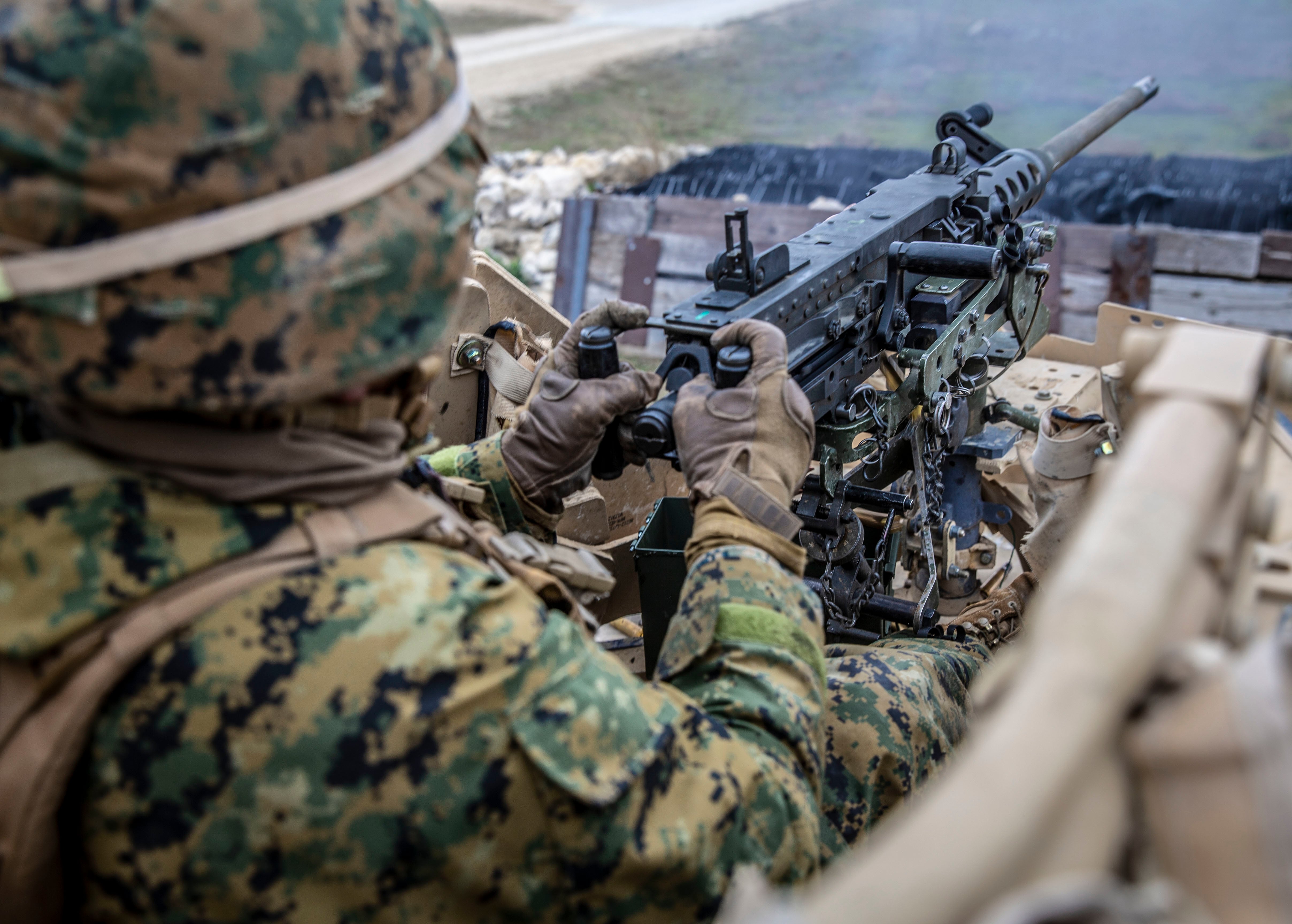In September 2018, the Commandant of the Marine Corps Gen. Robert B. Neller directed that various Marine Corps units incorporate forced marches into combat readiness evaluations.
That directive has resulted in new changes to training and readiness manuals that will see grunts moving farther distances while also testing combat effectiveness after a long hike carrying considerable weight.
According to an administrative message posted Friday, the Corps is updating the “forced march” portion of the training and readiness manuals for grunts and reconnaissance units.
The changes now require these Marines to be able to move 32 km carrying an assault load of roughly 70 pounds in eight hours.
RELATED

“The forced march will culminate and transition directly into an evaluated tactical exercise to test the unit’s ability to execute an extended foot movement under load and remain combat effective,” the MARADMIN reads.
According to the Marine Corps order covering the Marine Corps Combat Readiness Evaluation, or MCCRE, the evaluated tactical event can be “offensive or defensive exercise, NBC [nuclear, biological, chemical] exercise, patrolling exercise” or an event related to a unit’s mission essential tasks. That order was signed in Feb. 2019.
The forced marches are intended to be part of and integrated with a unit’s MCCRE, which tests a unit’s ability to carry out core tasks. Marine units are required to conduct a MCCRE every two years or once during a deployment cycle.
The change impacts infantry regiments, infantry battalions, reconnaissance battalions and Force Reconnaissance Companies, according to the MARADMIN.
Prior to the changes, the infantry training and readiness manual required grunts to move 20 km carrying an approach march load of 90 pounds in five hours.
The new change will see a lighter load, but an extended distance for the forced march requirement and an added tactical exercise.
But it’s not just grunts that will see changes to forced hikes.
Other ground combat elements to include artillery regiments, assault amphibian battalions, combat engineer battalions, light armored reconnaissance battalions, tank battalions, air and naval gunfire liaison companies and low altitude air defense battalions will now be required to complete forced timed marches.
These Marines will need to be able to move 15 km in four hours carrying a fighting load of 55 pounds, “with 95 percent of the force remaining mission capable,” according to the MARADMIN.
Many of these units like artillery, tanks, engineers and AAV Marines already had requirements for a four-hour 15 km movement in fighting load, according to their individual training and readiness manuals.
The infantry training and readiness manual breaks down hike loads into four categories: assault load, fighting load, approach march load and sustainment load.
The assault load is roughly 70 pounds and includes gear needed to carry out an assault.
The fighting load is roughly 55 pounds and includes combat gear necessary for the immediate mission at hand.
The approach march load is just more than 90 pounds and includes gear necessary for extended operations when resupply is still available.
The sustainment load is nearly 150 pounds but is intended to supply a Marine from their pack when resupply is not available. The massive weight limits mobility and distances a Marine can march.
While the Corps is extending hike distances for some infantry Marines, it’s also working on reducing the load burden on grunts. The Corps is about to field lighter .50-cal polymer ammunition and is seeking lighter body armor.
Marine Corps Training and Education Command signed off on the new training and readiness manual changes in November 2018.
Shawn Snow is the senior reporter for Marine Corps Times and a Marine Corps veteran.




